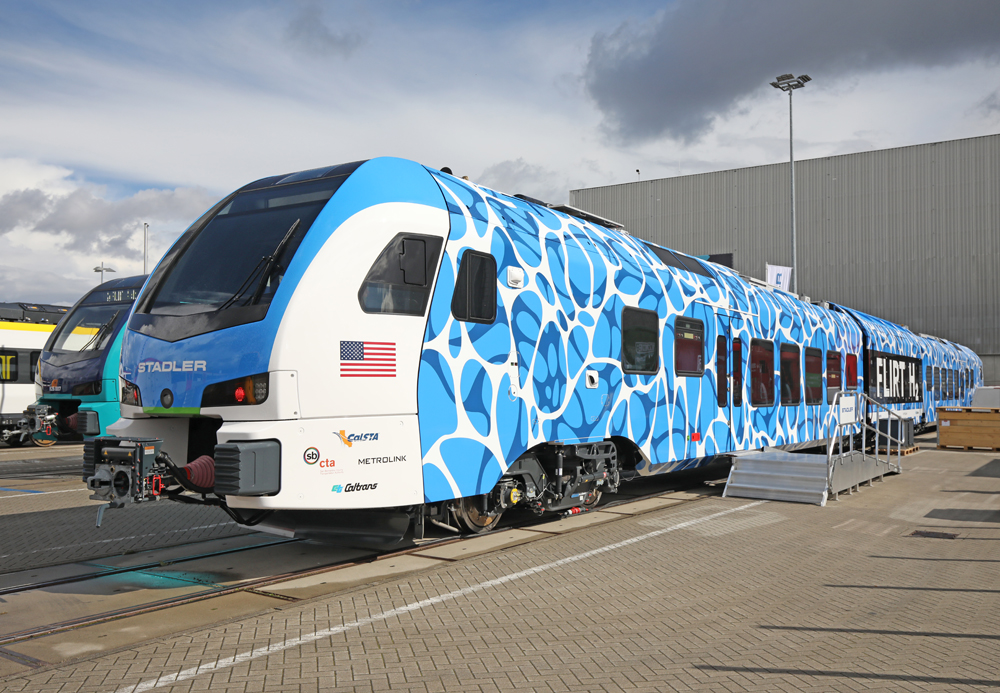
SAN BERNARDINO, Calif. — North America’s first hydrogen-powered passenger trainset planned for regular use is getting closer to entering service in Southern California. The San Bernardino County Transportation Authority’s zero-emission multiple unit trainset, which the agency is promoting as ZEMU, will enter its second phase of testing next week.
After several months of tests between the ZEMU’s communication technology and grade-crossing warning systems, the agency is moving into its next phase of tests. Beginning Nov. 12, the agency will conduct overnight vehicle testing to measure the operational performance of the hydrogen-powered trainset on Metrolink’s 9-mile Arrow Corridor on its San Bernardino line between San Bernardino and Redlands, Calif.
Tests will operate on weekday nights between 9 p.m. and 4 a.m. and with grade crossing validations complete, the trainset will operate through grade crossings without flaggers as normal commuter trains. These tests will continue until the end of January 2025.
Trains News Wire contacted the SBCTA to learn the key testing differences between the new hydrogen trainset and conventional diesel-powered equipment.
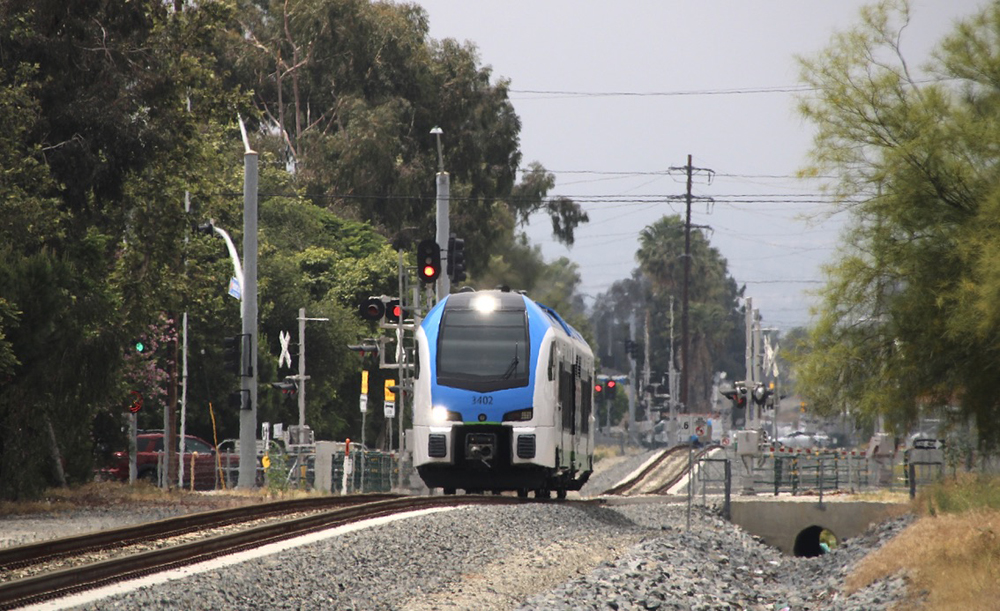
“Generally speaking, testing for the ZEMU is consistent with what was performed when we introduced the [Diesel Multiple Units] to the Arrow service area,” says Tim Watkins, the chief of legislative and public affairs at SBCTA. “There are some subtle vehicle size and weight differences that will be addressed in this round of testing and warrants taking a thorough look at vehicle performance before offering it to public service.
“Additionally, modifications to the existing Arrow Maintenance Facility are required to accommodate a hydrogen storage and fueling station to support the operations of the ZEMU. SBCTA’s new hydrogen storage and fueling facility will be the first hydrogen fueling station for rail vehicles in Southern California.”
The ZEMU uses a combination of hydrogen fuel cells and batteries to propel the train. Hydrogen fuel and oxygen helps generate electricity to power the train’s propulsion system. The only emissions are water vapor.
The SBCTA’s decades-long vision to develop zero-emissions rail transit technology was designed in partnership with Swiss train builder Stadler. The agency entered into a contract with the company in 2019 and the blue-and-white hydrogen train, a FLIRT (Fast Light Intercity and Regional Train) H2, arrived in the U.S. from Europe in summer 2023. The trainset underwent extensive testing at the Federal Railroad Administration’s Transportation Technology Center in Pueblo, Colo., before arriving in southern California in June 2024.
The agency anticipates the zero-emission trainset will enter service in early 2025.
While the SCBTA train will be the first hydrogen-powered passenger train to run in the U.S., similar hydrogen fuel-cell equipment operated in Quebec in a three-month trial last year [see “Alstom’s hydrogen passenger train to debut …,” Trains News Wire, Feb. 3, 2023].






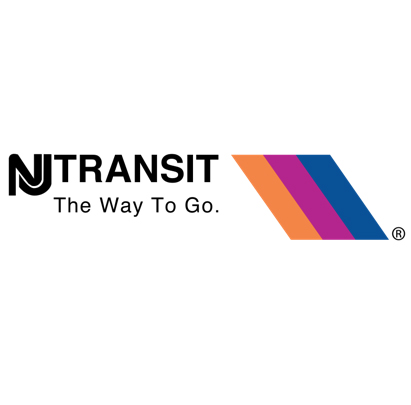
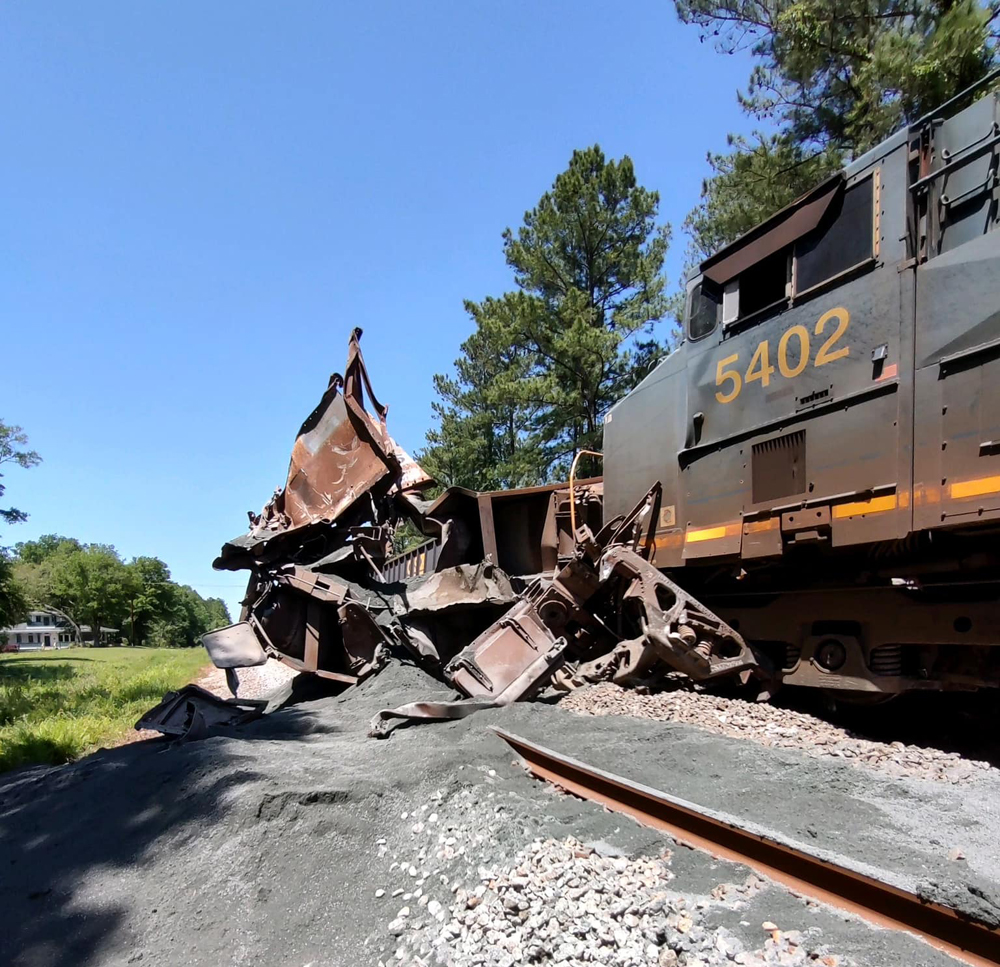
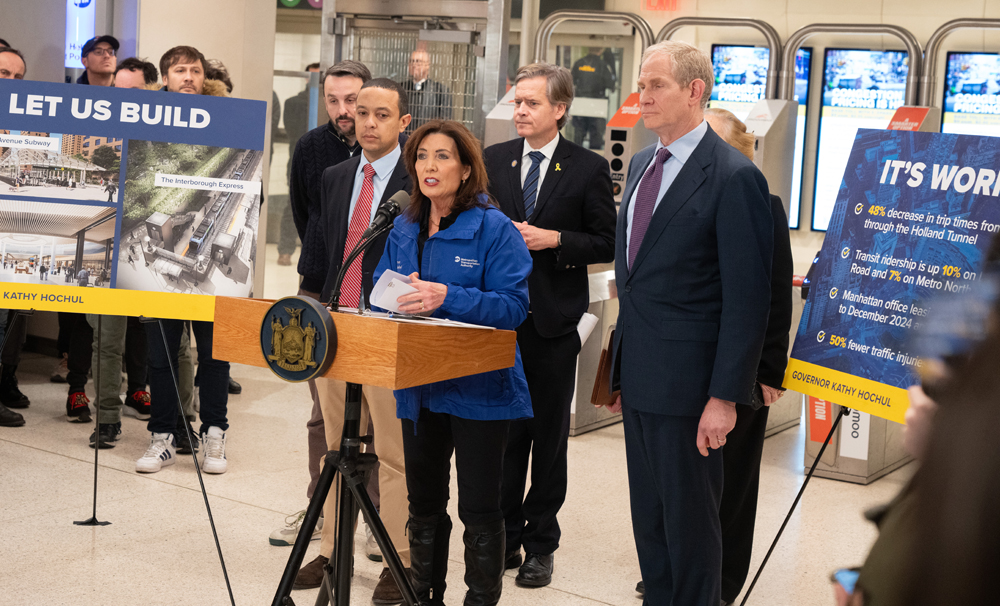
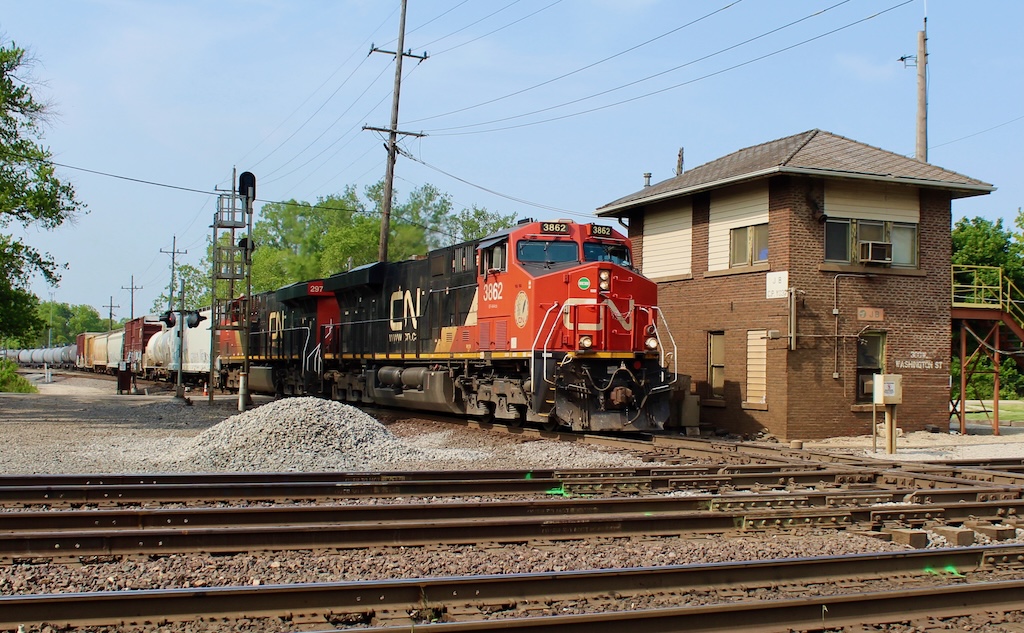




And how is the Hydrogen produced?
See DOE link: https://www.energy.gov/eere/fuelcells/hydrogen-fuel-basics
According to the DOE website: “Today, hydrogen fuel can be produced through several methods. The most common methods today are natural gas reforming (a thermal process), and electrolysis. Other methods include solar-driven and biological processes.
Thermal Processes
Thermal processes for hydrogen production typically involve steam reforming, a high-temperature process in which steam reacts with a hydrocarbon fuel to produce hydrogen. Many hydrocarbon fuels can be reformed to produce hydrogen, including natural gas, diesel, renewable liquid fuels, gasified coal, or gasified biomass. Today, about 95% of all hydrogen is produced from steam reforming of natural gas.”
Side of the trainset looks like graffiti. I can’t say the front end does much for me either — sort of like the early UP diesels.